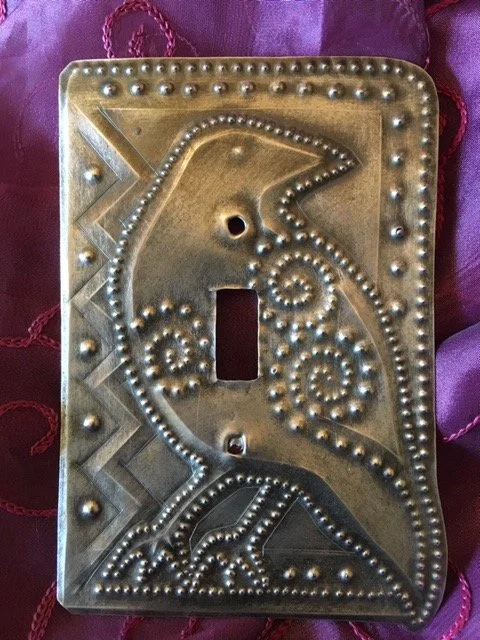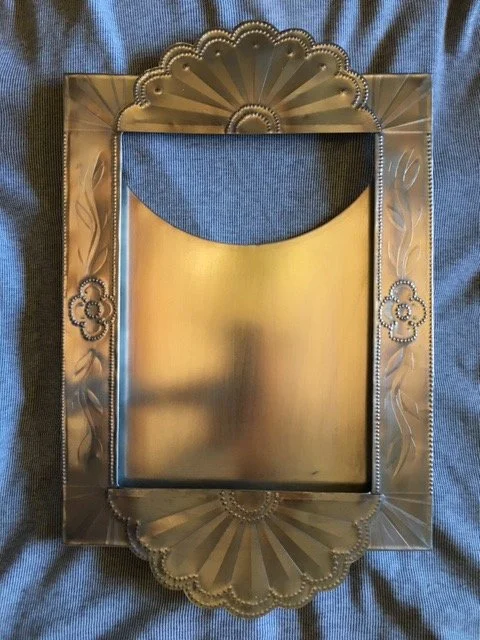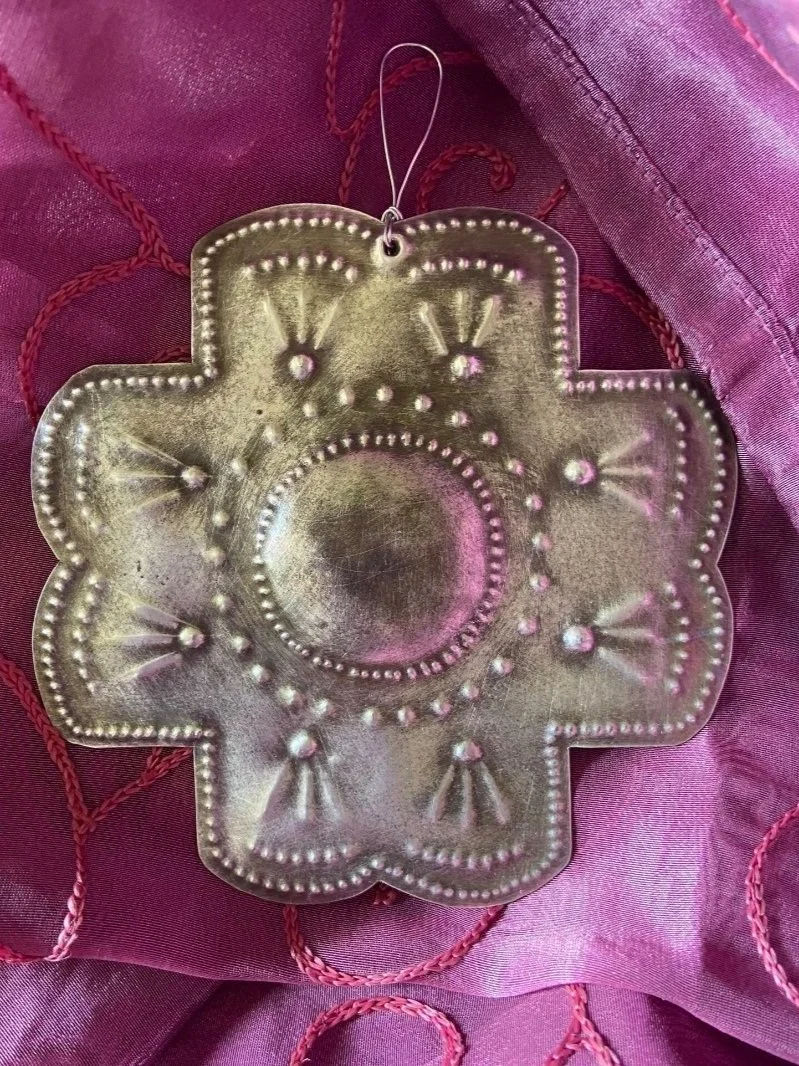
New Mexican tin smithing:
Sacred art from the spiritual heart of the state
New Mexican tin smithing as it exists today is a vital Southwestern folk art birthed through the intersection of Spanish, Indigenous, and Mexican craftspeople. Early practitioners produced decorative and functional pieces by pounding flat large army surplus cans. This repurposed metal became the basis for a genre of folk art centered heavily on the Catholicism of the region. Traditional tin smithing was often used for light fixtures and picture frames within church settings. Motifs like the cross, rosetta, and sacred heart are often still used by contemporary artisans.
To support the next generation of New Mexican tinsmiths, I have taught this art form in Taos, Dixon, and Española public schools for the last 16+ years as part of the Visiting Artists Program. The curriculum I wrote and published is adaptable for students K-12 and covers the history, tools, and techniques of the craft.
Tin smithing can be taught as cultural inheritance
I have also produced instructional videos and gave lectures at the Millicent Rogers Museum in Taos, NM about tinsmithing and other New Mexican folk art forms.
Click the button below to view the instructional video I created on the history and techniques of papel picado.
New Takes on Traditional Tin Smithing









